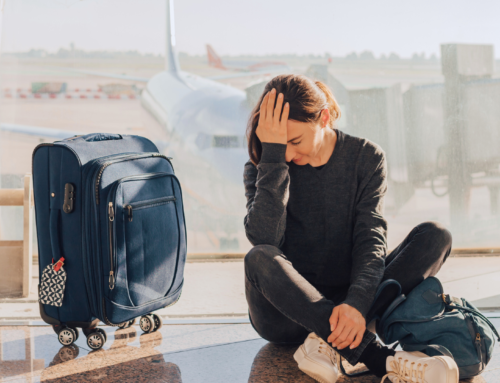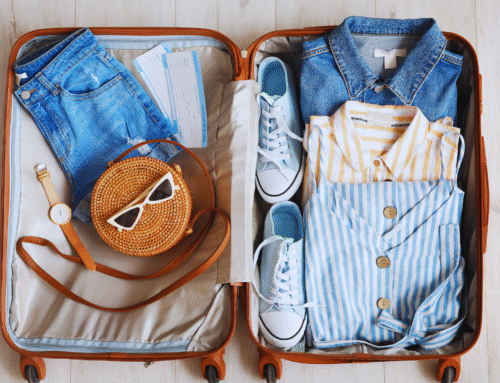Traveling can pose challenges to maintaining a fitness routine, but it is entirely feasible with a bit of planning. Staying fit while traveling often involves utilizing hotel facilities, exploring local parks, or engaging in bodyweight workouts that require little to no equipment. Each destination offers unique opportunities that can be incorporated into an exercise routine, helping travelers feel energized and revitalized.
Incorporating fitness into a travel itinerary can be both enjoyable and rewarding. Many cities provide outdoor spaces for running or biking, while others might offer unique classes, such as yoga on the beach or hiking in national parks. By taking advantage of these local options, travelers can create a memorable experience while ensuring they remain active.
Planning ahead is crucial for success. Setting realistic fitness goals and scheduling workouts around travel activities can keep fitness routines intact. With a little creativity and motivation, maintaining a fitness routine during travel becomes a seamless part of the journey.
Planning Your Fitness Routine Before Traveling
Preparation is essential for maintaining a fitness routine while traveling. By setting clear goals, researching local options, and packing the right equipment, individuals can stay on track and ensure their fitness regimen continues without interruptions.
Setting Attainable Fitness Goals
Before traveling, it is important to set specific and achievable fitness goals. These goals should align with the travel schedule and available resources. For example, if traveling for business, incorporating shorter, high-intensity workouts may be more realistic.
Goals can range from 30 minutes of cardio each day to completing a certain number of workouts during the trip. Individuals should consider how to adjust their expectations based on factors like time constraints and access to fitness facilities.
Researching Local Gyms and Workout Facilities
Individuals should take time to research local gyms, studios, or fitness facilities at their travel destination. Checking online for gym availability or using fitness apps can help identify options.
Many cities offer daily passes or short-term memberships, providing flexibility. Additionally, look for yoga studios, parks, or community centers that may offer classes or spaces for workouts. Knowing the facilities available can enhance the travel experience.
Packing Portable Workout Equipment
Packing portable workout equipment can greatly enhance a traveler’s fitness routine. Consider bringing lightweight items like resistance bands or a yoga mat. These items take up little space and can provide a versatile workout solution almost anywhere.
In addition, using a workout app can offer structured routines that utilize minimal equipment. By having some basic gear on hand, individuals can effectively maintain their fitness regimen regardless of their environment.
Effective Workouts and Staying Active on the Road
Maintaining fitness while traveling requires creativity and commitment. Effective workouts can be performed in limited spaces, using bodyweight exercises and routine planning to ensure continued physical activity. By incorporating various activities, travelers can adapt their fitness regimen to different environments.
Bodyweight Exercises and Quick Workouts
Bodyweight exercises are ideal for travelers, requiring no equipment and minimal space. Key movements include:
- Push-ups: Build upper body strength.
- Squats: Target the lower body and core.
- Planks: Enhance core stability.
Quick workouts can be structured into 15-20 minute sessions. A suggested routine includes:
- 10 push-ups
- 15 squats
- 30 seconds planks
- 10 lunges (each leg)
Travelers can perform these anywhere, making them effective tools for maintaining their fitness routine.
High-Intensity Interval Training Sessions
High-Intensity Interval Training (HIIT) is suitable for busy travelers seeking efficient workouts. HIIT alternates short bursts of intense activity with rest periods, maximizing calorie burn in brief sessions.
A sample HIIT routine could include:
- 30 seconds of jumping jacks
- 30 seconds of rest
- 30 seconds of burpees
- 30 seconds of rest
- 30 seconds of high knees
This format can be adapted based on fitness levels and available time. Travelers can complete a full workout in about 20-30 minutes, benefiting from its time-efficient nature.
In-Room Workouts and Using Limited Space
Hotel room workouts offer convenience, especially when space is limited. Simple exercises can be performed using just body weight or minimal space.
In addition to bodyweight exercises, consider:
- Chair dips: Utilizes hotel furniture for strength training.
- Wall sits: Perfect for building leg strength.
- Yoga poses: Promote flexibility and relaxation.
To maximize effectiveness, travelers can engage in 20-minute workout circuits that incorporate two to three types of exercises combined with short breaks.
Outdoor Activities and Exploring Destinations
Traveling provides unique opportunities for engaging in outdoor activities. Exploring a new city by running or cycling can enhance both fitness and experience. Options include:
- Renting a bicycle to discover scenic routes.
- Hiking local trails for a combination of cardio and enjoyment of nature.
- Swimming in hotel pools or nearby bodies of water.
Each activity allows travelers to stay active while appreciating their surroundings, making fitness an integral part of their journey.
Nutrition and Healthy Habits During Travel
When traveling, maintaining a nutritious diet and healthy habits can be challenging, but it is essential for overall wellness. Careful planning and smart choices can help sustain fitness goals.
Maintaining a Balanced Diet
Traveling often disrupts regular eating patterns. To counteract this, it’s important to prioritize a balanced diet. This includes incorporating a variety of foods from all food groups:
- Fruits and Vegetables: Aim for at least five servings a day.
- Proteins: Incorporate lean meats, fish, eggs, and legumes.
- Whole Grains: Choose whole grain bread, brown rice, and quinoa.
Planning ahead can also assist in keeping meals nutrient-dense. When dining out, consider ordering dishes that include these ingredients to keep meals balanced.
Making Healthy Food Choices
While on the go, making informed food choices is crucial. Here are some practical tips:
- Research Restaurants: Look for places with healthy options beforehand.
- Read Menus Carefully: Choose meals that are grilled, baked, or steamed instead of fried.
- Limit Sugary and Processed Foods: These can derail nutrition goals and lead to energy crashes.
Opting for items with whole ingredients minimizes the intake of unhealthy additives. Always check for local specialties that may offer healthy alternatives.
Smart Healthy Snacking
Snacking can support energy levels while preventing hunger between meals. Here are smart snacking options to consider:
- Nuts and Seeds: These are rich in healthy fats and protein.
- Fresh Fruits: Convenient and loaded with vitamins.
- Greek Yogurt: High in protein and probiotics for digestive health.
Packing these snacks in travel bags ensures easy access to nutritious options and avoids unhealthy temptations found in airports or on the road.
Staying Hydrated on the Go
Hydration is essential for fitness and overall health, especially during travel. Here are ways to ensure adequate hydration:
- Carry a Reusable Water Bottle: This makes it easy to refill and stay hydrated.
- Drink Water Before Meals: This helps with appetite control and digestion.
- Limit Caffeinated and Sugary Drinks: These can lead to dehydration.
Choosing water-rich foods like fruits can also contribute to hydration levels. Paying attention to fluid intake helps maintain energy and supports overall well-being.
Adapting and Staying Motivated Throughout Your Fitness Journey
Staying committed to a fitness routine while traveling can be challenging. Adapting strategies and utilizing resources are essential to maintain motivation and achieve fitness goals.
Embracing Flexibility in Your Fitness Plan
Travel presents unforeseen challenges that can disrupt a fitness regimen. It is important to adopt a flexible mindset to accommodate changes in routine. This might mean shortening workout times or modifying exercises based on available space.
For instance, hotel rooms can serve as makeshift gyms. Bodyweight exercises, such as push-ups and squats, require no equipment. Incorporating methods like high-intensity interval training (HIIT) can maximize workout effectiveness in limited timeframes.
Creating a travel-specific workout plan can enhance commitment. This flexible approach helps to adjust to variations in schedules, weather, or workout spaces without feeling discouraged.
Leveraging Technology and Fitness Apps
Fitness apps are vital tools for travelers aiming to maintain their routines. They provide easy access to workout plans, nutrition tracking, and motivational resources. Many apps offer a variety of exercises that cater to different fitness levels and equipment availability.
Popular options include MyFitnessPal for nutrition tracking and Fitbit for activity monitoring. These apps allow users to set goals, log workouts, and connect with friends for added motivation. Push notifications can serve as reminders to stay active, ensuring consistency.
Using these digital resources helps keep fitness a priority. Travelers can personalize their fitness journey based on individual preferences and available resources, making it easier to stay on track.
Using Public Transportation for More Activity
Public transportation can be an effective way to incorporate more physical activity during travel. Choosing to walk or bike to transit points adds additional miles to the daily routine.
For example, opting for a bus or train station further from the destination encourages walking. Carrying bags or luggage can also boost the physical challenge. This simple shift increases daily activity levels without the structure of a traditional workout.
Making active transportation a norm can significantly bolster fitness efforts. It provides opportunities for exploration while preventing sedentary behavior during travel.






Leave A Comment